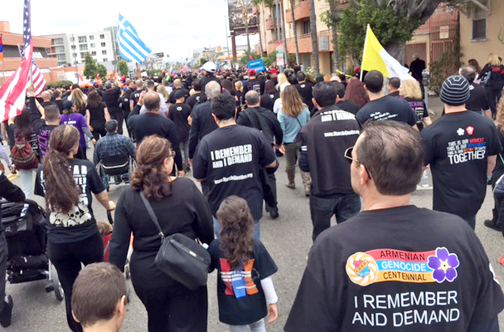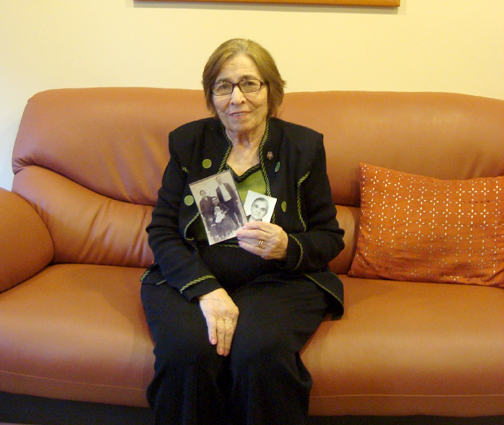
Thousands, including residents of La Crescenta and the surrounding area, marched to protest the Armenian Genocide on April 24 in downtown Los Angeles.
By Jason KUROSU
On Friday, April 24, the 100th anniversary of the Armenian Genocide, an estimated 130,000 people flooded the streets of Los Angeles, embarking on a six-mile trek from Sunset Boulevard and Western Avenue in Little Armenia to the Turkish Consulate. The Greater Los Angeles area contains the largest Armenian diaspora in the United States and it showed in Friday’s massive protest, termed the March for Justice.
Organized by 19 Armenian organizations, the event brought Armenians and non-Armenians together, calling for recognition of the 1915 genocide that took the lives of over 1.5 million Armenians.
Los Angeles Mayor Eric Garcetti, Congressman Adam Schiff and California State Senate President Pro Tempore Kevin de Leon were among the political figures who came out in support of the cause and an Armenian Genocide Memorial Square was unveiled at the corner of Western Avenue and Hollywood Blvd.
Local Armenians from Glendale and La Crescenta could be counted among the thousands who took part in the march.
Crescenta Valley Town Council Vice President Harry Leon, who traveled with members of the Crescenta Valley High School Armenian Club to Los Angeles, said he was “very impressed by the organizing” of the march and thought that recognition of the Armenian Genocide was coming closer to a reality.

Though the United States has not officially taken a position of recognition, Leon noted that “43 states accept that the Genocide happened.”
La Crescenta resident Aram Bekarian said he was “proud to be part of the march” and called the memory of the Genocide “a slowly healing wound” for the Armenian people, one that is lessened with each subsequent generation, but remains as long as the Genocide goes unacknowledged.
Bekarian’s son, Kevork, also participated in the march and sensed how the “wound” of the Genocide persisted.
“I don’t live in my country,” he said, when reflecting on how his generation views the Genocide. Kevork related how many of his other Armenian friends come from different countries, the direct result of thousands of Armenians fleeing their nation after the Genocide and establishing communities across the globe.
“It’s the one cause that keeps us together,” he said.

Bekarian’s mother, Osanna, was born shortly after the events of the Genocide.
Osanna’s mother and father were 10 and 15 years old, respectively, in 1915 and hailed from Urfa, a city which is now part of Turkey and had approximately 25,000 Armenian residents living there at the time of the Genocide.
Osanna’s parents were able to escape to a Kurdish village, but many other family members were not so fortunate, lost to the death marches starting from Armenia, heading towards concentration camps located in the Syrian Desert.
The family eventually settled in Aleppo, where Aram lived until moving to the United States in 1980.
“We are what we are because we kept our identity and our culture,” Aram said. “We’re proud of our Armenian heritage. As long as we have our culture, that’s how we survive.”
Armenians endure, now a full century after the Ottoman government tried to reduce them to a historical afterthought.
But the wound also endures. Though her grandson spoke of being so far removed from his homeland, Osanna, now in her 80s, did not have the same longing.
When asked about someday returning, she did not wish to be reminded of what occurred there.
“Why would I want to go back to the place where they beheaded my brother?”


